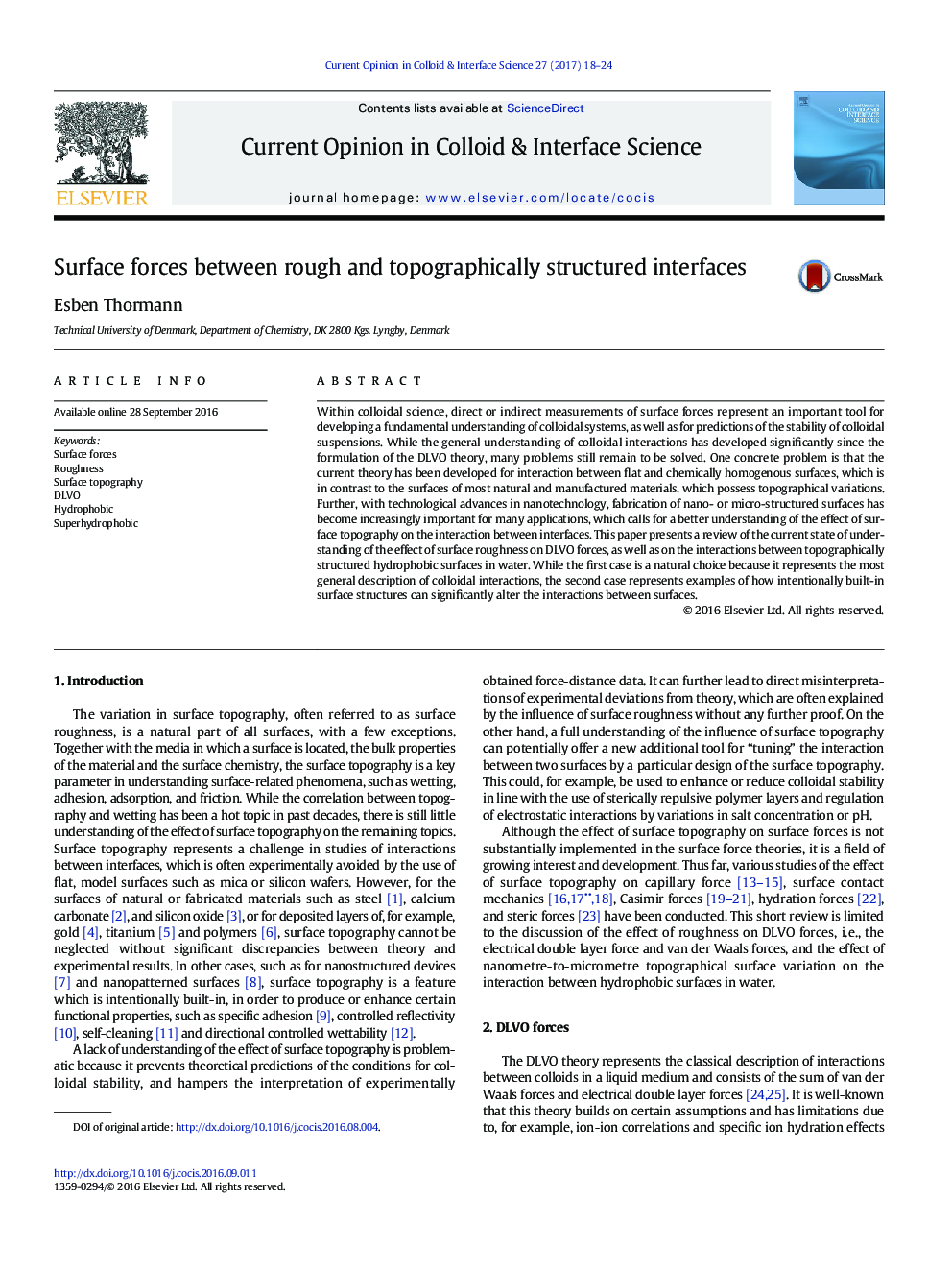| کد مقاله | کد نشریه | سال انتشار | مقاله انگلیسی | نسخه تمام متن |
|---|---|---|---|---|
| 4983623 | 1454362 | 2017 | 7 صفحه PDF | دانلود رایگان |
- Effect of surface topography on DLVO forces and forces between hydrophobic surfaces
- The distance between two topographically structured surfaces is not uniquely defined.
- Surface roughness leads to an apparent lack of attractive van der Waal forces.
- For superhydrophobic surfaces, topography is a part of the surface design.
- Trapped air in hydrophobic surface structures courses long-ranged forces.
Within colloidal science, direct or indirect measurements of surface forces represent an important tool for developing a fundamental understanding of colloidal systems, as well as for predictions of the stability of colloidal suspensions. While the general understanding of colloidal interactions has developed significantly since the formulation of the DLVO theory, many problems still remain to be solved. One concrete problem is that the current theory has been developed for interaction between flat and chemically homogenous surfaces, which is in contrast to the surfaces of most natural and manufactured materials, which possess topographical variations. Further, with technological advances in nanotechnology, fabrication of nano- or micro-structured surfaces has become increasingly important for many applications, which calls for a better understanding of the effect of surface topography on the interaction between interfaces. This paper presents a review of the current state of understanding of the effect of surface roughness on DLVO forces, as well as on the interactions between topographically structured hydrophobic surfaces in water. While the first case is a natural choice because it represents the most general description of colloidal interactions, the second case represents examples of how intentionally built-in surface structures can significantly alter the interactions between surfaces.
43
Journal: Current Opinion in Colloid & Interface Science - Volume 27, February 2017, Pages 18-24
